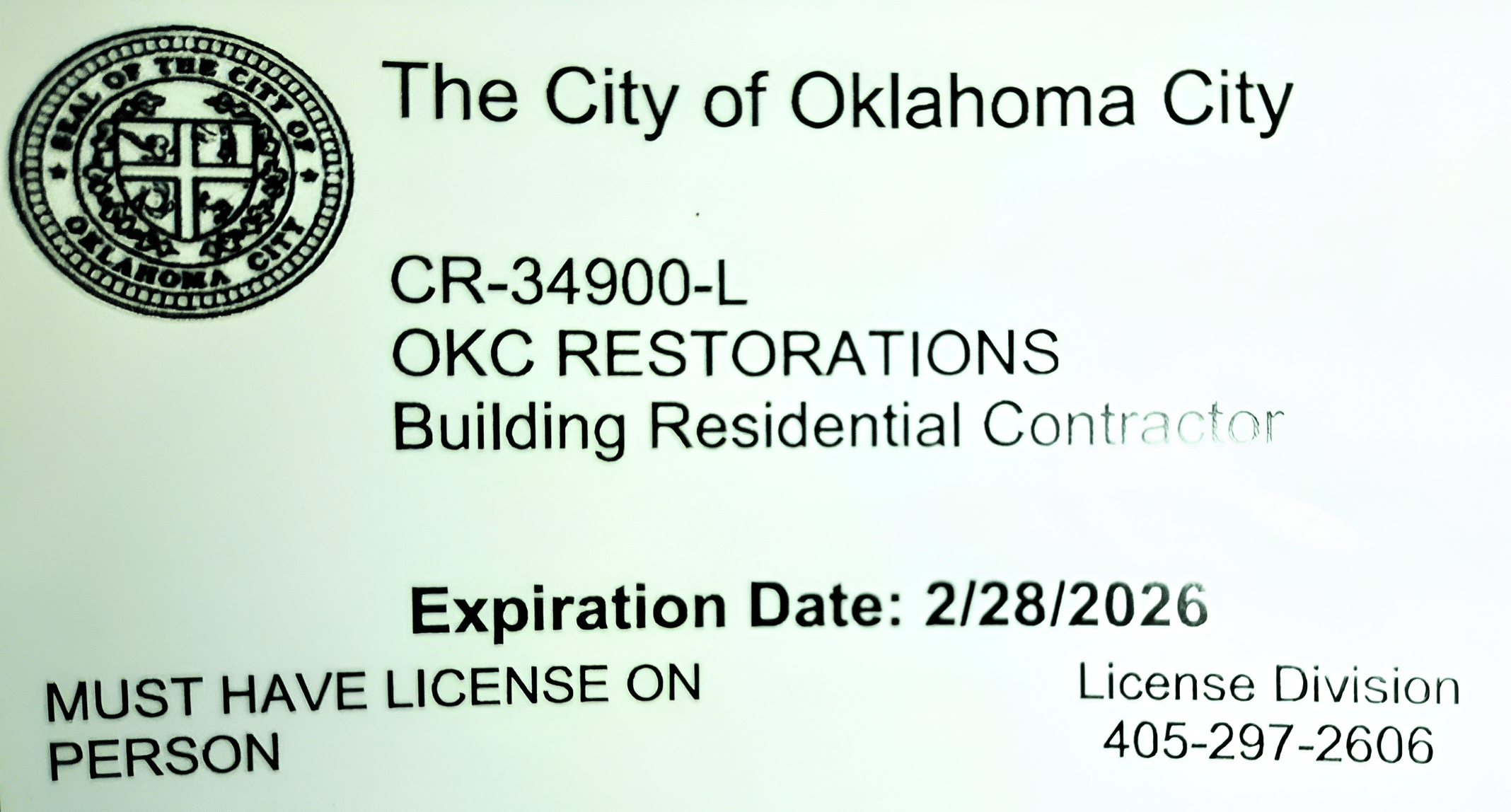Summer is all fun and games until a storm hits out of nowhere. One moment it’s sunny, and the next, thunder roars, the wind blows hard, and rain pours down. If you live in places like Oklahoma City, you’ve probably seen how quickly the weather can change. Big storms can bring heavy rain, flooding, hail, and lightning, all of which can damage your home.
But here’s the good news: a little preparation goes a long way. Whether you’re wondering how to prepare for the summer storm or need advice on summer storm damage protection, this article covers it all. After all, summer should be about sunshine and s’mores, not emergency repairs.
Why Storm Damage Prevention Is Important?
Protecting your home from storm damage is about keeping your family safe and your valuables secure. Summer storms can arrive suddenly, bringing strong winds, heavy rain, and potential flooding. These storms can cause broken windows, roof leaks, and even serious damage to your home. If you’re not prepared, these problems can get worse and lead to expensive repairs, water damage, electrical issues, and mold that can harm your health.
By investing time in summer storm preparation, you reduce these risks and protect important things like family keepsakes. It also makes it easier to get help from your insurance because many policies do not cover damage if the home was not properly maintained.
Understanding Summer Storm Damage
Understanding how summer storms can damage your property helps you stay safe and avoid expensive repairs. These storms often bring strong winds, heavy rain, hail, and lightning. This can cause roof leaks, broken windows, flooded basements, fallen trees, and power outages. Some damage isn’t immediately visible. Water can get into hidden spaces and lead to mold, wood rot, or damage to your electrical, heating, or plumbing systems. Whether your home or business is old or new, regular upkeep and being prepared for storms can help protect your property.
Types of Summer Storms
Knowing what each type of storm can do helps you prepare and keep your home safe. Here are the most common types of storms:
Thunderstorms
Thunderstorms are common in the summer, bringing heavy rain, lightning, hail, and strong winds. They can damage roofs, windows, and siding, cause power surges, and lead to flash floods and outages.
Hurricanes and Tropical Storms
Hurricanes and tropical storms often hit the coast but can move inland, bringing heavy rain, strong winds, flooding, and damaging roofs, trees, basements, and windows.
Tornadoes
Tornadoes are powerful storms that can quickly damage homes, cars, and windows. Even small tornadoes can damage roofs, break windows, and cause trees or branches to fall.
Flash floods
Flash floods occur rapidly after heavy rain and can quickly inundate basements, damage homes, and sweep away cars. They’re most dangerous in low areas; stay alert and act quickly.
Storms often give warning signs before they hit if you know what to look for. Watch for dark, fast-moving, or rotating clouds, a sudden drop in temperature, rising winds, distant thunder, and flashes of lightning. Pay attention to weather alerts on your phone or local news. Catching these early signs helps you act fast and stay safe.
How to Prepare For Summer Storms?
Preparing your home before a summer storm makes a big difference. Taking these simple steps ahead of time can help reduce damage and keep your family safe when severe weather rolls in.
Roof and Gutter Maintenance
A solid roof and clean gutters help protect your home during storms. Check for missing shingles, cracks, or damage. Make sure gutters and downspouts are clear so rainwater can flow away from your home. Checking these areas before storm season can prevent big problems later.
Installation of Storm Shutters or Impact-Resistant Windows
Protecting your windows before a storm is a smart idea. Storm shutters and impact-resistant windows protect your home from flying debris, strong winds, and rain. Shutters can be quickly closed when a storm is coming, while impact-resistant glass is built to stay intact even under pressure.
Check Door Seals and Hardware
Doors can let in wind and water if they aren’t sealed well. Check the weather stripping and replace anything that’s worn out. Make sure the hinges and locks are strong. You can also add a storm door or reinforce the frame for extra protection. A tight seal keeps water out and helps save energy, too.
Trim Trees and Remove Dead Branches
Loose or hanging branches can be dangerous during storms. Trim trees often, especially trees growing near your roof, windows, or power lines. Remove dead or weak trees to help keep people, pets, and your home safe.
Proper Drainage System and Sump Pump
Good drainage helps keep your home dry during storms. Ensure your yard slopes away from the house to prevent water from collecting near the foundation. Clean out drains and test your sump pump to make sure it works. Add a battery backup in case the power goes out.
Pipes and Plumbing Protection
Storms can be tough on your plumbing, so it’s important to check things before bad weather hits. Wrap any exposed pipes to keep them from leaking. Ensure valves function properly and inspect for leaks or rust, particularly in older pipes.
Seal Windows and Doors
Sealing windows and doors helps keep wind and rain out during summer storms. Look for cracks or gaps and use caulking or weather stripping to seal them. This prevents leaks, reduces the risk of mold, and helps with energy savings.
Install Backup Power Sources
A backup power source is very helpful during storms. A generator or battery backup keeps important things like sump pumps, refrigerators, and medical devices running when the power goes out. If you use a gas generator, make sure to have carbon monoxide detectors for safety.
Safeguarding Electrical and Plumbing Systems
Before a storm, it’s important to protect your home’s electrical and plumbing systems. Move important equipment out of your basement if you can. Secure items like electrical panels, HVAC units, and water heaters to prevent them from moving due to strong winds or during floods.
Create an Emergency Kit with Essentials
Prepare for storms by making an emergency kit with basics like food, water, flashlights, batteries, medicine, and important papers. Keep everything in a waterproof box. Remember to add pet supplies and personal care items.
Develop a Family Evacuation and Communication Plan
Make a simple plan before a storm. Decide how to leave your home and where to meet if you get separated. Practice the plan often, especially with kids.
What to Do After a Summer Storm?
The skies may be clear, but don’t let your guard down just yet; here’s what to do next to protect your home and start the recovery process after a summer storm:
Check for External Damage
Once the storm is over and it’s safe to go outside, carefully walk around your home. Look for obvious signs of damage such as missing shingles, cracked windows, broken siding, or damaged gutters. Watch for fallen trees, power lines, and debris. Always wear sturdy shoes and protective gear, and take photos of any damage for insurance.
Check for Internal Damage
After you’ve looked outside, check the inside of your home for damage. Look for water stains on ceilings, warped floors, soft spots on the walls, or any signs of leaks. Check often-overlooked areas like basements, attics, and behind furniture. Watch for mold or a musty smell, which can indicate water seepage.
Document Damage for Insurance Claims
Make the insurance process easier by documenting all the damage. Take clear, dated photos and videos of everything, inside and outside, before you start cleaning up. Write down what was damaged, including brand names and model numbers if possible. Contact your insurance company right away.
Make Temporary Repairs
You may need to implement temporary repairs quickly to stop damage from getting worse. Cover roof leaks with tarps and board up broken windows. If pipes are leaking, turn off the water and use buckets or towels to catch drips.
Clean Up Safely
Clean-up after a storm can be risky, so safety should come first. Wear boots, gloves, safety glasses, and a mask to protect yourself from sharp debris, mold, or contaminated floodwater. Be careful around nails, broken glass, and other hidden hazards. Don’t use wet electronics or appliances until they’ve been checked.
Hire Professionals for Repairs
For extensive storm damage, it’s best to hire professionals. Problems with your roof, wiring, or structure need experts with the right tools and training. A reliable team like OKC Restorations can assess the damage, remove water, and fix hidden issues safely. Always ensure they’re licensed and ask for references to ensure you get reliable repairs.
Strengthen Your Home in Case of Future Storms
Once the repairs are done, it’s a good time to make your home stronger. Fix weak spots by reinforcing your roof, adding gutter guards, or using smart monitors to spot problems early. Use what you’ve learned from this storm to make upgrades that protect your home better next time.
When to Seek Professional Help?
Wondering when it’s time to call in the pros? If you spot major leaks, warped floors, moldy smells, or anything that looks like serious structural damage, don’t wait; get help! Attempting major repairs yourself can be challenging and may even make things worse. A professional team has the skills and tools to handle damage safely, protect your home, and restore everything to normal quickly. So, when things feel overwhelming or unsafe, it’s smart to bring in the experts and save yourself time and money down the road.
Contact OKC Restoration For Professional Storm Damage Restoration
Summer storms can hit hard, but you don’t have to deal with the damage alone. Whether you need emergency water removal or mold remediation, OKC Restoration is here to help. We’re a trusted, locally-owned business right here in Oklahoma City. From prep to cleanup, our team offers expert, local support you can count on. We handle everything from sealing windows to storm damage repairs. Contact us today for a free estimate or emergency service, and let us help restore comfort and safety to your home.




